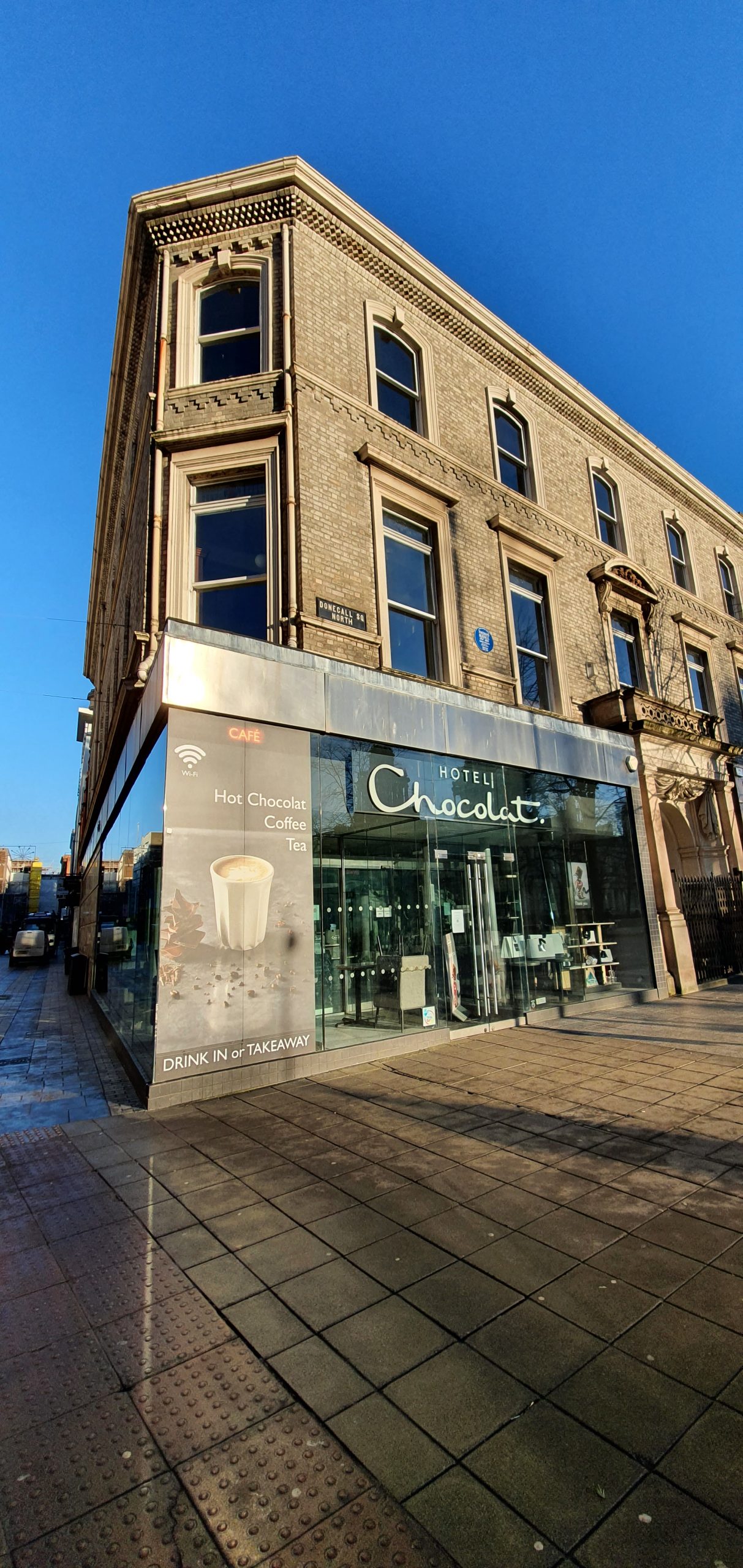
 John Killen’s A History of the Linen Hall Library 1788-1988 is a solid and worthy chronological narrative of the first two centuries of the Linen Hall Library (LHL).
John Killen’s A History of the Linen Hall Library 1788-1988 is a solid and worthy chronological narrative of the first two centuries of the Linen Hall Library (LHL).
He starts by setting out how the library came of the intellectual ideas of the enlightenment and the social movement amongst literate and wealthy middle-class people to establish reading, scientific and literary clubs across Britain and Ireland.[1]
In 1788, the Belfast Reading Society was founded and was re-named the Belfast Society for Promoting Knowledge four years later. Central to the work of the Society was the establishment of a subscription library for its members.[2]
The Library reflected the radical politics of many of its subscribers at the time. Amongst many of Belfast’s middle classes were men who advocated for the transformation of the Irish Parliament and the widening of the electoral franchise. Many of these men joined the United Irishmen movement that campaigned for equal representation and political reform. The Library also reflected these radical ideals and passed resolutions to admit both Roman Catholics and women to its membership.[3][4]
Towards the end of the 1790s, many United Irishmen (UI) believed the only way to achieve their aims was through violent revolution, following the examples of America and France. In 1803, Thomas Russell, the first librarian of the LHL, was executed at Downpatrick Goal for his involvement in the Emmet Uprising.[5]
The Library managed to survive the UI rebellion and was not closed down by the authorities as many of its members were men of high standing, loyalists and actively supported the British Crown during the uprising.[6]
In 1802, the LHL moved into rooms in the White Linen Hall and obtained the name it is known by today.[7] The White Linen Hall was built in 1783 as an exchange for merchants to purchase and sell linen.
This building was demolished in the 1890s and the current Belfast City Hall constructed on the site. The LHL was forced to relocate and moved to its current premises on the corner of Donegall Square North.[8]

Over the next 50 years, the LHL saw a steady increase in its membership reaching a record of 3,270 in 1922.[9] However, after the Second World War, the library began to decline due to improved public provision of libraries, the influence of TV and radio, and the poor management of the Library.[10][11][12] Finally, the Troubles prevented many members from using its facilities and in the late 1970s, it looked as though it would have to close.[13] Membership had dropped to 1,719 in 1980.[14]
However, a new membership drive, redevelopment of its premises, renting retail space on its ground floor and government support saved the library.[15][16][17] By 1988, membership had nearly doubled on its 1980 level to 3,044.[18]
Killen’s history is the standard work on the LHL and is a must for those seeking an in-depth account of its history.
NOTES:
[1] John Killen, A History of the Linen Hall Library 1788-1988 (Belfast: Linen Hall Library, 1990), p.3.
[2] Ibid., p.14.
[3] Ibid., p.11.
[4] Ibid., p.20.
[5] Ibid., p.45.
[6] Ibid., p.22.
[7] Ibid., p.24.
[8] Ibid., p.76.
[9] Ibid., p.86.
[10] Ibid., p.100.
[11] Ibid., p.104.
[12] Ibid., p.105.
[13] Ibid., p.110.
[14] Ibid, p.253.
[15] Ibid., p.124.
[16] Ibid., p.124.
[17] Ibid., p.130.
[18] Ibid., p.235.

